כ׳ ניסן ה׳תשפ״ג | April 11, 2023
Al Jaffee, 102, AH
Al Jaffee, a notable American cartoonist who reinvented and illustrated ‘The Shpy’ character in Tzivos Hashem’s The Moshiach Times magazine, passed away on 19 Nissan.

Al Jaffee, a notable American cartoonist who reinvented and illustrated ‘The Shpy’ character in Tzivos Hashem’s The Moshiach Times magazine, passed away on 19 Nissan.
Al Jaffee, a notable American cartoonist who reinvented and illustrated ‘The Shpy’ character in Tzivos Hashem’s The Moshiach Times magazine, passed away on 19 Nissan.
He was 102 years old.
In 2020, when he retired at the age of 99, Chabad.org published a tribute to his life and work, republished below.
***
When Al Jaffee finally put down his pencil last month at the age of 99, the venerable cartoonist could look back at an impressive body of work. One of MAD magazine’s “usual gang of idiots” and its longest-tenured contributor, Jaffee most notably created the magazine’s iconic Fold-In back page. While popularly known for his biting wit and “Snappy Answers to Stupid Questions,” for nearly four decades, Jaffee has also channeled his talents for something more sublime: inspiring countless Jewish children.
Six times a year since his debut in 1984, children have clamored to see Jaffee’s illustrations in The Moshiach Times, the magazine published by the Chabad-Lubavitch movement’s youth organization, Tzivos Hashem. In its colorful pages, Al Jaffee reinvented a character called “the Shpy.” Part-fumbling secret agent and part-Torah scholar, “the Shpy,” clad in a trench coat with his hat pulled over his eyes and an attaché case filled with every conceivable gadget, is tasked with doing battle against the Yetzer Hora, the evil inclination.
The MAD magazine illustrator’s involvement with The Moshiach Times tells a more personal story—one that highlights the trauma and triumph of 20th-century Jewry and Jaffee’s own Jewish journey.
“The Shpy wasn’t just some superhero. I couldn’t do that. I had to draw a character I could get into,” Jaffee explains in an interview with Chabad.org. “So I really put myself into [him].”
In the fall of 1980 the Rebbe launched Tzivos Hashem with the goal of educating and empowering Jewish children around the world to explore and grow in their Judaism.
“We knew right away we wanted to create something that would welcome the children who joined,” says Rabbi Yerachmiel Benjaminson, executive director of Tzivos Hashem. “So we put together this kit with an ID card, a booklet, a welcome letter and a magazine.”
In 1982, they launched a magazine called The Moshiach Times, to be issued six times a year. Dr. Dovid Sholom Pape had been involved with various youth-oriented projects in the past, including editing a guide to the 12 pesukim—the 12 Torah passages chosen by the Rebbe to inspire children, and was eventually appointed editor.
The Rebbe took immediate interest in the project.
“We used to send the cover of every issue to the Rebbe,” recalls Pape. “He would look it over and make suggestions—such as making sure girls were represented on every cover.” Other comments from the Rebbe included his belief that caricatures should be avoided in the magazine. In a note to the editors, the Rebbe wrote, “It’s not fitting that people should be drawn with unnaturally oversized bodies and cartoonishly large noses, even though that style is common in comics.” To do so, the Rebbe noted, was a “huge educational mistake.”
“When it came to the cartoonish elements that the Rebbe wanted us to avoid,” says Pape, “I don’t think he wanted children to laugh at how others looked. He was sensitive to those with various defining traits or disabilities and wanted art to reflect that sensitivity.”
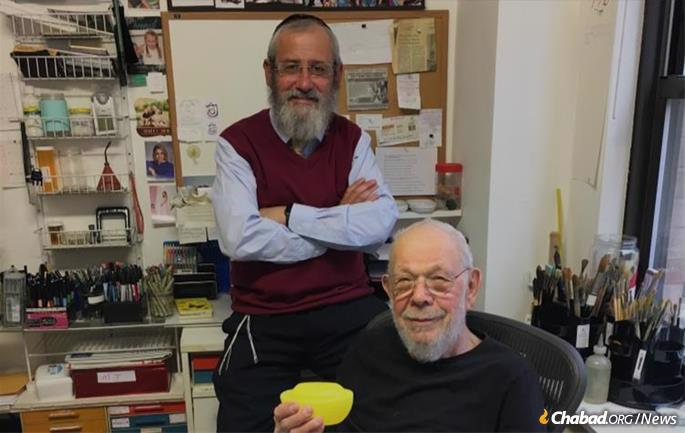
A Hero is Born
“The Shpy” was one of the initial sections in the new magazine.
“He was meant to be someone that the children could identify with,” says Pape. “He was someone who in subtle ways could teach and inspire children with the fundamentals of Judaism.”
Head artist for the magazine Aidel Backman, an accomplished illustrator and author, drew a man in a trenchcoat with a full beard and a fedora. Attaché case in hand, he looked not unlike a Chabad rabbi.
Tzivos Hashem and its exciting new magazine were an instant success. Within its first year, the organization had enrolled 60,000 Jewish boys and girls in the club. Just two years after its founding, 250,000 children had joined its ranks with tens of thousands waiting every other month for the continued adventures of “The Shpy.”
Despite these early successes, David Masinter, a rabbinical student from South Africa who joined the Tzivos Hashem team in 1983, thought the magazine could use an even more contemporary touch to reach a wider audience, and his colleagues agreed.
“The content was amazing,” says Masinter, today director of the Chabad House of Johannesburg, “but it needed something that spoke to a new generation of Jewish youth.”
The Rebbe, Masinter notes, had a keen eye on communicating ideas to American Jews and paid close attention to the art, design and even typeface of Chabad publications. In the 1940s, when artist Michel Schwartz was working on the movement’s pioneering Talks and Tales magazine (the popular Yiddish version was called Shmuessen Mit Kinder), he recalled how to his surprise the Rebbe described the specific look for each section. Es zol oys’zehn vee Ripley—“It should look like Ripley,” the Rebbe told Schwartz in Yiddish, referring to Robert Ripley’s “Believe It or Not” in The New York Mirror. Regarding a more adventurous comic strip in the magazine, the Rebbe remarked Es zol oys’zehn vee Dick Tracy—”It should look like Dick Tracy!” Decades later, Schwartz designed Tzivos Hashem’s logo, also with direct input from the Rebbe.
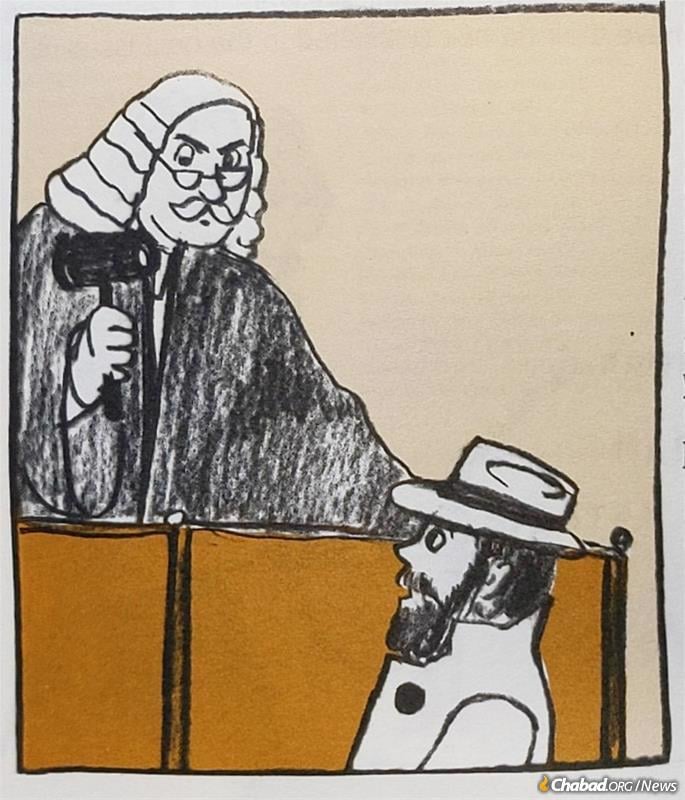
‘G‑d Gave You a Talent’
From this, Masinter could see the importance of drawing on contemporary culture. “As a kid growing up in South Africa in the 1970s, MAD magazine was exceptionally popular,” he remembers. “So I said, we need to get these guys for The Moshiach Times!”
Masinter and Benjaminson managed to arrange a meeting with Al Feldstein, MAD’s maverick editor. Under Feldstein’s watch, the magazine had gained a cult following among teens and college students, peaking at 2,132,655 subscribers in 1974.
“I had this impression that they must be the biggest thing in the world,” says Masinter. He was somewhat surprised to find out that the magazine’s offices, stylized as 485 MADison Ave., were rather cramped and sparse.
“We went into Al Feldstein’s office and told him we wanted to get in touch with his top talent,” relates Masinter. Instead of throwing them out, the editor immediately introduced them to MAD’s Dave Berg and Al Jaffee, and Joe Kubert, an accomplished comic-book artist who had illustrated for DC and Marvel comics and founded a cartoon and graphic art school that bears his name.
Masinter and Benjaminson made house calls to the illustrators. “We were the Rebbe’s emissaries, so we told them what the Rebbe had taught us: “G‑d gave you a talent,” recalls Masinter. “Instead of just making people smile, use it to really help uplift the world.”
Berg and Kubert were both traditional Jews, and therefore their involvement was not all that surprising. Berg had long been involved with Jewish communal organizations, including B’nai Brith. In the MAD office, Berg would often have raging theological debates with the magazine’s publisher, William Gaines (the family shortened the name from Ginzburg).
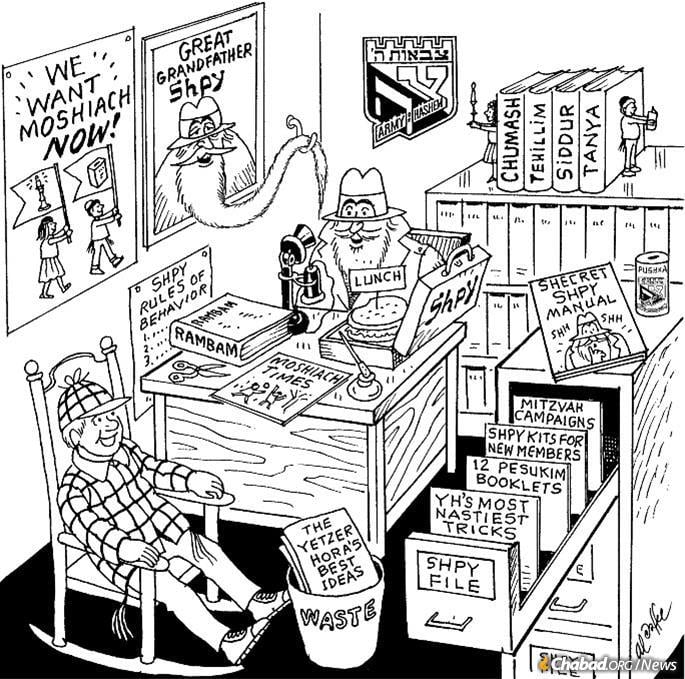
Kubert, who emigrated from Jezierzany, then Poland, with his family as a child before World War II, even got a mystical push to join in the project. Benjaminson remembers how not long after approaching Kubert, the artist called him up and shared a dream he had. “Yossel,” his deceased father had told him, using Kubert’s Yiddish nickname, “Helf zei arois—help them out.” He was in.
Jaffee was perhaps the most surprising of the three to work with The Moshiach Times. With his sardonic sense of humor, Jaffee was known to often tease Berg for some of his more overt religiosity.
A Child Shuttled Between Two Worlds
Al, known then by his Jewish name Abraham, was born in 1921, in Savannah, Ga., to Morris and Mildred Jaffee, two Jewish immigrants from Zarasai, Lithuania. He spent his childhood quite literally being shuttled between two worlds.
When Jaffe was 6 years old, his mother, having discovered that their household help in Savannah had cooked non-kosher food in her kitchen, left the United States, taking him and his three brothers back to her birthplace in Lithuania.
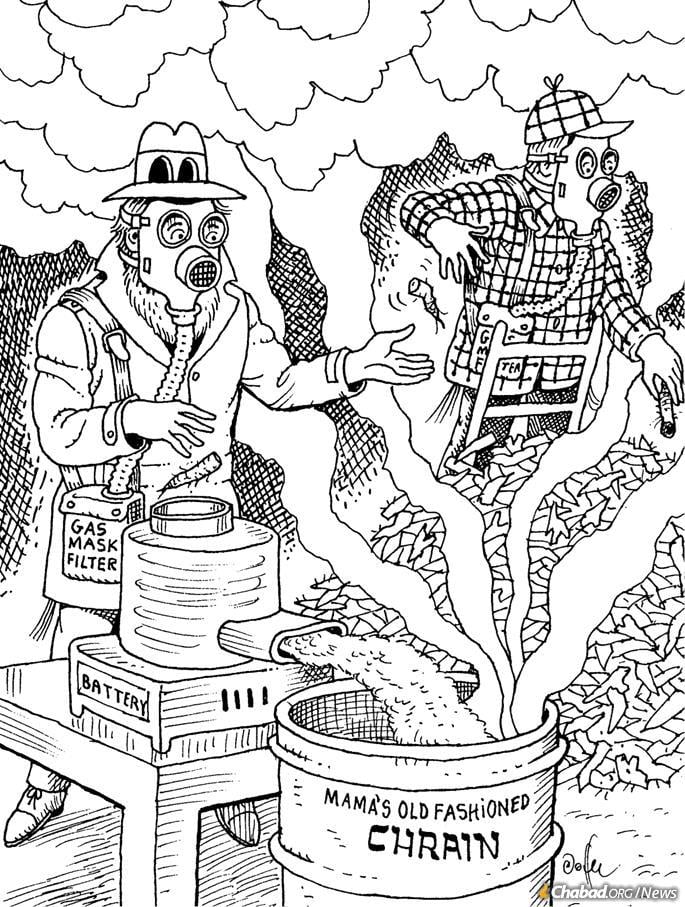
A small shtetl surrounded by lakes and rivers near the Latvian and Belarusian borders, Zarasai is perhaps best known as the hometown of Yudel Penn, an artist of Chassidic origins and mentor for Marc Chagall. Today, Jaffee describes his time in Zarasai as somewhat idyllic. Left to roam the countryside with his brothers—Harry, Bernard and David—they explored the lakes and backwoods of their new home.
“It was like something out of Huckleberry Finn,“ says Jaffee. “A bunch of kids would get together and figure out what to do: We’d find a stick and ball and play lapta,” a Russian bat and ball game. “If we wanted to go fishing someone would cut down a branch, grab a few hairs from a horse’s tail and make a fishing rod.”
It was also in Zarasai that Jaffee discovered his artistic skills. “In cheder, we learned about various stories from the Torah. I was fascinated by the story of Noah’s ark. So I carved an ark out of wood with little animals that could stand around it.“
Al and Harry carved Shabbat candlesticks and a kiddush cup out of wood for their mother to use on Shabbat. Came Simchat Torah, the two elder Jaffee boys would make lanterns illustrated with various biblical personalities they’d learned about. “My brother Harry and I would spend the whole year sketching and planning what we’d do to improve the design of lanterns,” retells Jaffee. “Then when the holiday came, we’d march around the bimah. It was so much fun.”

But not all was enjoyable for the Jaffee boys. Their father back in America, Al found himself obligated to help fill in for the void in his brothers’ lives. Devastatingly poor, they sometimes struggled to find food. What was more, Al had trouble relating to his mother’s religiosity. He would later tell Pape his memories of waking up Shabbat morning to find his mother had left for the day, making the miles-long walk to the synagogue while her children still slept at home. “I always felt she could have asked our Polish neighbors to drive us into town,” laments Jaffee. “But it was Shabbat, so she wouldn’t hear of it.”
After a year in Zarasai, Al’s father, Morris, made the trip to bring his family back to America, only to have Mildred bring the children back to the shtetl again the next year, in 1929. When Hitler rose to power in 1933, Morris managed to bring three of his four sons back to America, this time to Far Rockaway, N.Y., for good. Yet Mildred, unable to live in what she felt was a treife medina, couldn’t bear to leave Lithuania. Finally, in 1940, as the Nazi war machine rolled through Europe, Morris arranged for someone to smuggle David—the remaining brother—to safety. Mildred was to follow, but by then, it was too late. She was killed in the Holocaust, half a world away from Al and his brothers.
Times remained tough for the Jaffees. With Morris working extra hours to pay for the needs of his children, Al would often go shopping for food, and Harry would act as the family cook. Looking back, Al sighs: “Oh, the survival mechanisms that come into play when you’re down and out.”
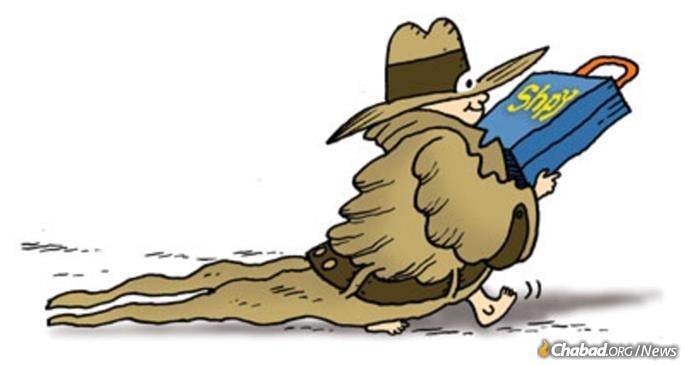
A Cavalcade of Jewish Characters
After serving as an artist for the U.S. military during the war, Jaffee (then formally known as Al to avoid some of the anti-Semitism he encountered in the armed services) began working professionally as an illustrator—first for Stan Lee (born Stanley Lieber and co-creator of Spider-Man) at what would become Marvel Comics, and then, from 1955, in the pages of MAD.
The comic-book industry was intensely Jewish at the time. Unable to get jobs at the tonier Madison Avenue ad agencies, the world of comics was wide open to Jews.
As Liel Leibovitz, senior writer for Tablet magazine and author of Stan Lee, A Life in Comics, notes there was a deeper expression of Jewish identity in the industry. In comic books, Jews were able to share a familiar world “where human beings, simultaneously powerful and flawed, bump up against each other, trying to figure out how to do good in a universe and ultimately understand that they need each other to survive.” \
MAD was no different, with its ironic sense of humor and a healthy dose of Yiddish vocabulary scattered throughout its page. Al brought with him the quick wit and sardonic bite of the stories that he heard in Zarasai about Motke Chabad, the famed Chassidic jester and prankster beloved among Lithuanian Jews.
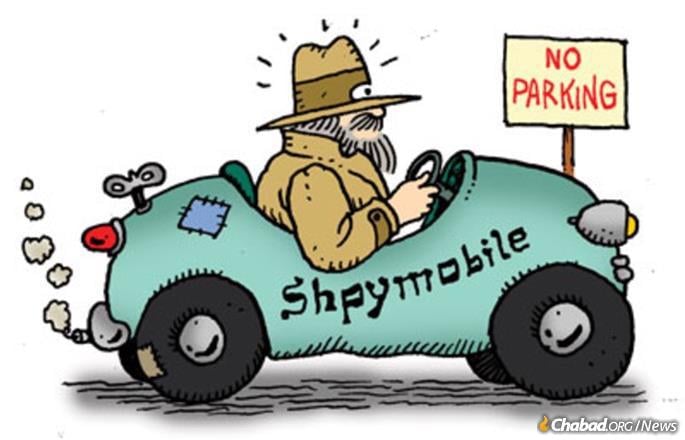
But Al also remained wary of certain aspects of overt religiosity, still scarred by what he described as his mother’s “ultra-religious” practices that ultimately cost her life. “Al was very critical of certain things when we first started,” Pape recalls. “But he would constantly tap into the knowledge of his youth to inspire his artwork.” While some of the other artists needed some guidance in depicting Jewish life, “Al got it right every time.”
“The Shpy” came to life through Jaffee’s pencil; perhaps Jaffee recentered himself as a Jew through this depiction. “ the Shpy was such a good character for an artist,” he says. Iterating on the original art, Jaffee pulled down the character’s hat over his eyes and gave him a wispy beard not unlike the one he used for his own self-caricature in his signature.
A cavalcade of other characters followed from Jaffee’s pen, such as “Kalman the Kosher Cowboy,” “Feivel of Fliggelfinger,” “the Duke of Candleshtick” and “Agent 613.”
As the years went by, the relationship between Jaffee and Pape deepened. When meeting, Pape would bring Jaffee mezuzahs, and help him wrap tefillin or shake the lulav and etrog during the holiday of Sukkot. They joked about the secret identity of “the Shpy” or about the real-life ramifications of his unique headwear. “You have no idea how many fathers have come home to see their old Shabbat hats sporting two fresh holes in them,” Pape quips, to which Jaffe responds in his deep voice with a loud “oy” and a laugh. When Al’s wife, Joyce, recently passed away, Pape arranged for Kaddish to be said for her.

Illustrating the hero six times a year was essentially a labor of love for Jaffee. Until his retirement, he would take great pains to lovingly sketch each line. When his hands trembled with age, he began illustrating with both hands—holding a pencil in his right hand while steadying it with his left.
“I enjoy working on ‘the Shpy,’ ” acknowledges Jaffee. Perhaps recalling his childhood in far-off Zarasai, he notes that the character “is not like Superman or some other hero; he’s someone the kids can relate to. He stands up to the Hamans and the bad guys of the world, protecting Jewish children.”
What was so singular about the Shpy was that he was a regular guy doing battle every day with the evil inclination. He was able to use the tools in his attaché case, given to him at “Shpy” school, and find a way using his mind to apply them to the problem at hand. He was an illustration of the good inclination inherent within each man, woman and child. As Jaffe notes, “ the Shpy always came out on top.”
After nearly a century, Jaffee still sees that as his goal as well, saying, “I want to be ‘the Shpy.’ ”
Reprinted with permission from Chabad.org

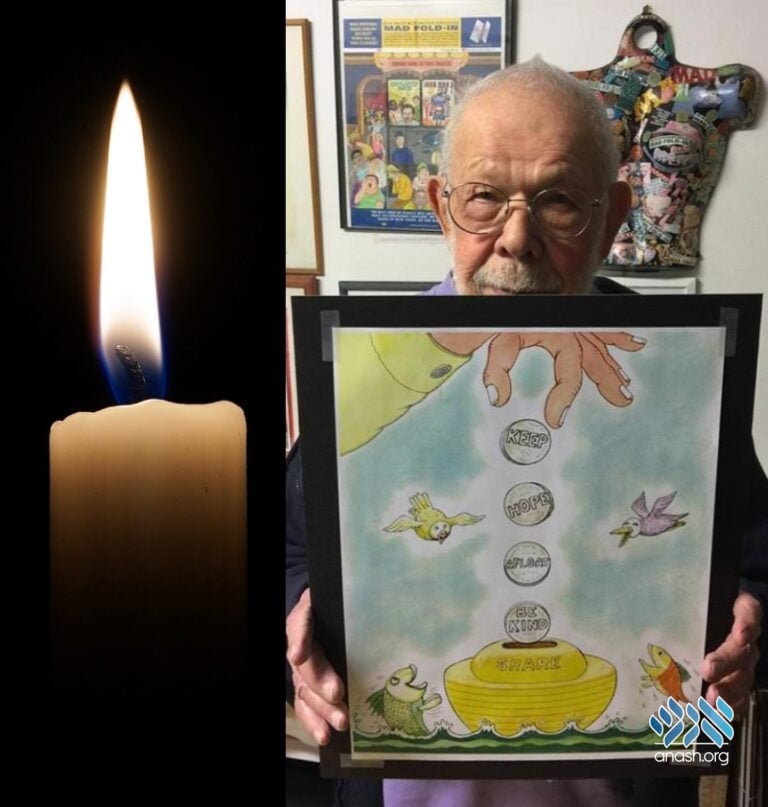
Send us your feedback